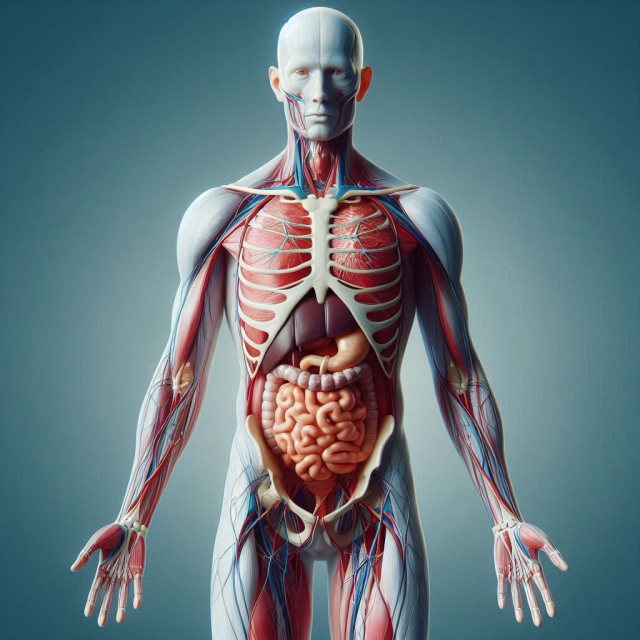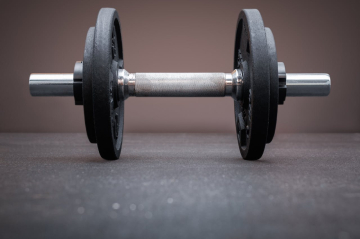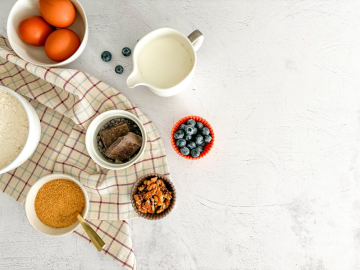The human body is a biological marvel, a complex and perfectly orchestrated machine that performs thousands of vital functions without most of us even realizing it. From the microscopic processes that occur in our cells to the astonishing capabilities of our organs, the human body is a field full of mysteries and fascinating facts. Throughout this article, we will explore some of the most curious facts about our bodies, revealing the incredible complexity and astonishing design that allow us to live, move, and think.
The Human Cell: A World in Miniature.
The human body is made up of about 37.2 trillion cells, each of which is a unit of life in itself. These cells are so small that it would take about 10,000 of them to cover the head of a pin. Inside each cell, there is a miniature world with organelles, mitochondria (known as the "powerhouses" of the cell), and the nucleus, which contains our DNA.
A cell can perform incredibly complex functions, such as replicating itself, repairing damage, and communicating with other cells. In fact, each cell has its own "biological clock," allowing processes like growth and repair to occur at the right time.
The Brain: A High-Performance Processor.
The human brain is an extraordinary organ, made up of approximately 86 billion neurons. These neurons are connected to each other through synapses, forming an incredibly dense communication network. It is estimated that the human brain has more synaptic connections than there are stars in the Milky Way.
The brain is also an extremely active organ. Although it only accounts for about 2% of total body weight, it consumes 20% of the oxygen and calories that the body takes in. This high energy demand is due to the intense electrical activity that is constantly taking place in the brain, even when we sleep.
A curious fact is that the brain does not feel pain. Despite being the center of pain perception in the body, the brain itself has no pain receptors. That is why, in brain surgeries, patients often remain conscious without feeling pain when the brain is manipulated.
The Heart: An Inexhaustible Machine.
The heart is another of the most amazing organs in the human body. This muscle, which weighs between 200 and 425 grams, pumps blood continuously throughout our lives. On an average day, the heart beats about 100,000 times, pumping about 7,500 liters of blood throughout the body.
The heart also has its own electrical system, which regulates the heartbeat and ensures that blood flow is constant and efficient. Even if it is separated from the body, the heart can continue to beat for a while if it is provided with an adequate supply of oxygen.
A curious fact is that a person's heart rate can reflect their emotions. When we are excited, anxious or scared, the heart beats faster due to the release of adrenaline. This phenomenon is what makes our heart "race" in situations of stress or excitement.
The Skin: The Largest Organ in the Body.
The skin is the largest organ in the human body, with an average surface area of about 2 square meters in an adult. Not only does it act as a protective barrier against the outside world, but it also regulates body temperature, enables sensory perception and helps in the production of vitamin D.
The skin is made up of several layers, with the epidermis being the outermost layer and the dermis being the thickest inner layer. Throughout life, the skin is continually regenerating. In fact, it is estimated that each person loses approximately 30,000 to 40,000 skin cells every minute. These dead cells make up a large part of the dust we find in our homes.
A curious fact is that the skin also has its own ecosystem of microorganisms. Millions of bacteria, fungi and viruses live on the surface of the skin, most of which are harmless or even beneficial, helping to protect us from infections.
Bones: Structure and Strength.
The human skeleton is made up of 206 bones, which provide structure, protection and support for muscles. Bones are not only strong, but also light. Throughout life, the skeleton is constantly renewed, with a process called bone remodeling, where old bone is replaced by new bone.
Human bones are incredibly strong for their weight. A bone the size of a matchbox can support up to 9 tons of weight. This strength is due to its internal structure, which is similar to that of a steel beam with hollow spaces that give it lightness and strength.
A curious fact is that babies are born with approximately 270 bones, some of which fuse together as they grow. This is especially evident in the skull, where several bones join together during the first years of life to form a solid, protective structure for the brain.
The Digestive System: An Impressive Process.
The human digestive system is a marvel of efficiency. From the moment a food enters the mouth, it begins a journey that can last anywhere from 24 to 72 hours, depending on the type of food and other individual factors.
The stomach is one of the key organs in this process. It can store up to 1.5 liters of food and has hydrochloric acid so strong that it can dissolve a razor blade. However, the stomach is protected from this acid by a layer of mucus that lines its interior, which prevents it from "self-digesting."
The small intestine, which is about 6 meters long, is where most of the nutrient absorption takes place. If all the microvilli lining the small intestine were spread out, its surface area would be about 250 square meters, the size of a tennis court.
The Lungs: Exchange of Life.
The lungs are essential organs for breathing, allowing the exchange of vital gases. Each lung is composed of a spongy structure containing millions of alveoli, small air sacs where oxygen and carbon dioxide are exchanged between the blood and the inhaled air.
On average, an adult breathes between 12 and 20 times per minute, which equates to approximately 22,000 breaths per day. The lungs have the ability to expand and contract up to 20 times per minute during intense exercise, adapting to the body's needs.
A curious fact is that if all the airways in a person's lungs were extended, they could span about 2,400 kilometers, a distance equivalent to a round trip between New York and Chicago.
Muscles: Movement and Strength.
The human body has over 600 muscles, which make up approximately 40-50% of the body weight in an average adult. These muscles work together to enable movement, maintain posture, and generate heat.
The strongest muscle in terms of contraction force is the masseter, the main muscle of the jaw. This muscle can exert a force of up to 200 pounds on the molars, allowing for effective chewing and grinding of food.
Another interesting fact is that the most active muscle in the body is the eye muscle. The muscles that control eye movement are constantly moving, adjusting the direction of the gaze up to 10,000 times a day.
The Immune System: The Invisible Defense.
The immune system is a complex network of cells, tissues, and organs that work together to defend the body against infection and disease. It is composed of white blood cells, antibodies, the lymphatic system, the spleen, tonsils, and bone marrow, among other components.
Every day, our immune system identifies and destroys thousands of invading microorganisms, such as bacteria and viruses, that might otherwise cause disease. An amazing fact is that the immune system has a "memory," which allows it to respond more quickly and effectively to infections that the body has previously encountered.
The Liver: The Factory of the Body.
The liver is the largest internal organ in the body and performs more than 500 essential functions, including blood detoxification, bile production, glycogen storage, and protein synthesis.
A curious fact is that the liver has an incredible regenerative capacity. Even if up to 75% of the liver is removed, it can completely regenerate within a few weeks, making it one of the most resilient organs in the human body.
The human body is an impressive biological machine, capable of performing incredibly complex functions and adapting to a variety of conditions. From the smallest cell to the largest organs, every part of our body works in harmony to keep us alive and functioning. These fun facts not only show us how fascinating our body is, but also the importance of taking care of it and keeping it in good shape.






